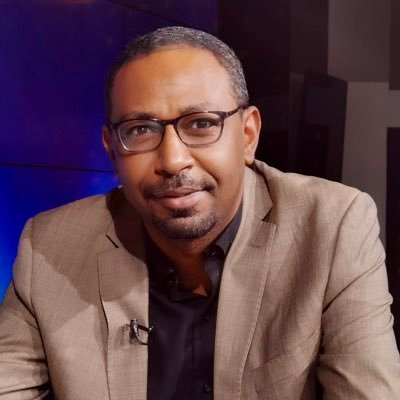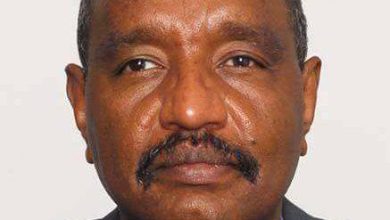Metals-for-Security Deal in the Congo: The Interplay of Exploitation’s Legacy and the Vortex of Dependency

Dr. Amjad Farid Al-Tayeb
“The real colonialism is that which controls the minds of peoples, making them see the colonizer’s interests as their own, and barter away their sovereignty for illusory promises of progress.”
— Ngũgĩ wa Thiong’o, Decolonising the Mind (1986)
In today’s global landscape, where new maps of power and control are being drawn in the competition between great powers, Africa—with its vast natural wealth and political fragility—has emerged as a central arena. Under glittering banners such as “sustainable development” and “strategic partnerships,” investment deals are being struck that prompt uncomfortable questions: are they genuine bridges toward independent economic revival, or merely sophisticated replications of colonial-era domination, dressed in modern, polished forms?
One such example is the new strategic agreement between the United States and the Democratic Republic of the Congo (DRC), centered on trading precious and strategic minerals for security support. Though still under negotiation as of June 2025, its details reveal intense geostrategic maneuvering—and lay bare the persistence and evolution of colonial structures of dependency. They also raise troubling questions about the future of sovereignty and national decision-making in Africa and across the Global South.
The DRC: A Strategic Crossroads
The DRC lies at the heart of Africa, spanning over 2.34 million square kilometers—making it the continent’s second-largest country after Algeria. It is a member of the East African Community (EAC) despite stretching westward to the Atlantic Ocean, and also belongs to the Southern African Development Community (SADC) and the African Union.
Bordered by nine countries—Central African Republic and South Sudan to the north; Uganda, Rwanda, Burundi, and Tanzania to the east; Zambia and Angola to the south; and the Republic of Congo and the Atlantic Ocean to the west—the DRC has a population of about 115 million, growing at nearly 3% annually. It is home to more than 400 ethnic groups, with the Bantu peoples comprising around 80%.
The country is a treasure trove of resources: over 60% of the world’s cobalt reserves, along with copper, lithium, gold, coltan, and diamonds, plus the Congo Basin—home to the planet’s second-largest rainforest. Yet despite a GDP of $150.8 billion, more than 75% of Congolese live below the poverty line, plagued by corruption and chronic political instability.
Leopold’s Bloody Legacy: The Brutal Foundation of a Distorted State
To grasp the depth of the Congo’s current tragedy, one must revisit its most brutal origins—not merely in the familiar colonial model, but in a unique and unparalleled episode of human plunder.
In the late 19th century, the Congo was not an official Belgian colony but the personal property of King Leopold II. At the 1885 Berlin Conference, through unmatched political cunning, Leopold persuaded European powers to grant him control over the vast Congo Basin under the guise of the “Congo Free State,” promising to combat the slave trade and pursue humanitarian goals.
In reality, he transformed the territory into a massive forced-labor camp, deploying a mercenary force known as the Force Publique to compel locals to collect rubber and ivory. The system ran on sheer terror: villages were assigned impossible rubber quotas, and failure to meet them was punished with unimaginable brutality. Mutilation—particularly the cutting off of hands and feet—was institutionalized as a tool of intimidation, with severed limbs displayed as proof of punishment.
This hellish regime, compounded by famine and disease resulting from the collapse of social and agricultural systems, triggered a demographic catastrophe: credible historical estimates suggest that by the end of Leopold’s absolute rule in 1908, the Congo’s population had been halved, with between 10 and 15 million deaths—one of the most horrific yet forgotten genocides of modern history.
Leopold’s crimes could not remain hidden forever. Courageous figures such as British shipping clerk E.D. Morel—who noticed that ships returning from the Congo were loaded with riches while those heading there carried only guns and ammunition—and diplomat Roger Casement, who compiled a damning report on the atrocities, led a global campaign to expose the horror. Under mounting international pressure, Leopold relinquished his private fiefdom in 1908, and the “Congo Free State” became the Belgian Congo.
While some of the most extreme abuses ended, the exploitative core remained intact: economic plunder continued; a rigid racial hierarchy was enforced; and Belgium deepened ethnic divisions through a “divide and rule” strategy that privileged certain groups in administration and the army, planting the seeds of future conflict. Education was scarce and controlled by Catholic missions, with only a handful of Congolese—the so-called évolués—receiving secondary education. At independence in 1960, fewer than 20 Congolese held university degrees.
Lumumba’s Assassination: The Aborted Dream of True Independence
When the DRC gained independence on June 30, 1960, it inherited this warped colonial legacy. Patrice Lumumba, the country’s charismatic first prime minister, envisioned genuine independence—not merely a new flag, but full control over the nation’s resources for the benefit of its people. This vision clashed head-on with Belgian and Western interests, especially regarding the strategic minerals of Katanga province.
Days after independence, Katanga—led by Moïse Tshombe with direct backing from Belgian corporations and Western intelligence—declared secession. Lumumba faced an international conspiracy to destabilize his government. When the UN failed to act decisively, he committed what the West saw as his “fatal sin”: requesting technical assistance from the Soviet Union at the height of the Cold War. This sealed his fate.
Removed from office by President Joseph Kasa-Vubu and arrested by army chief Joseph-Désiré Mobutu (later Mobutu Sese Seko)—a Western protégé—Lumumba was flown to Katanga on January 17, 1961, handed to his enemies, tortured, executed by firing squad, and dissolved in acid to erase all trace. His assassination, orchestrated with the direct complicity of Belgian and U.S. intelligence, deliberately crushed Congo’s hope for unity and sovereignty, plunging the country into decades of coups and civil wars.



